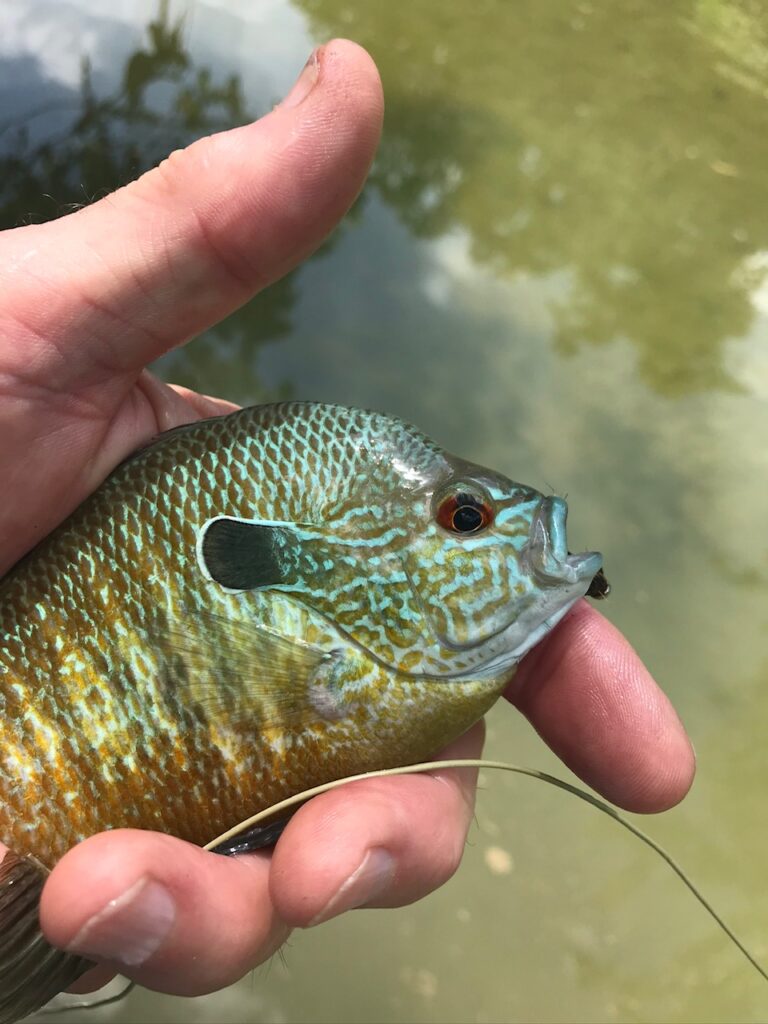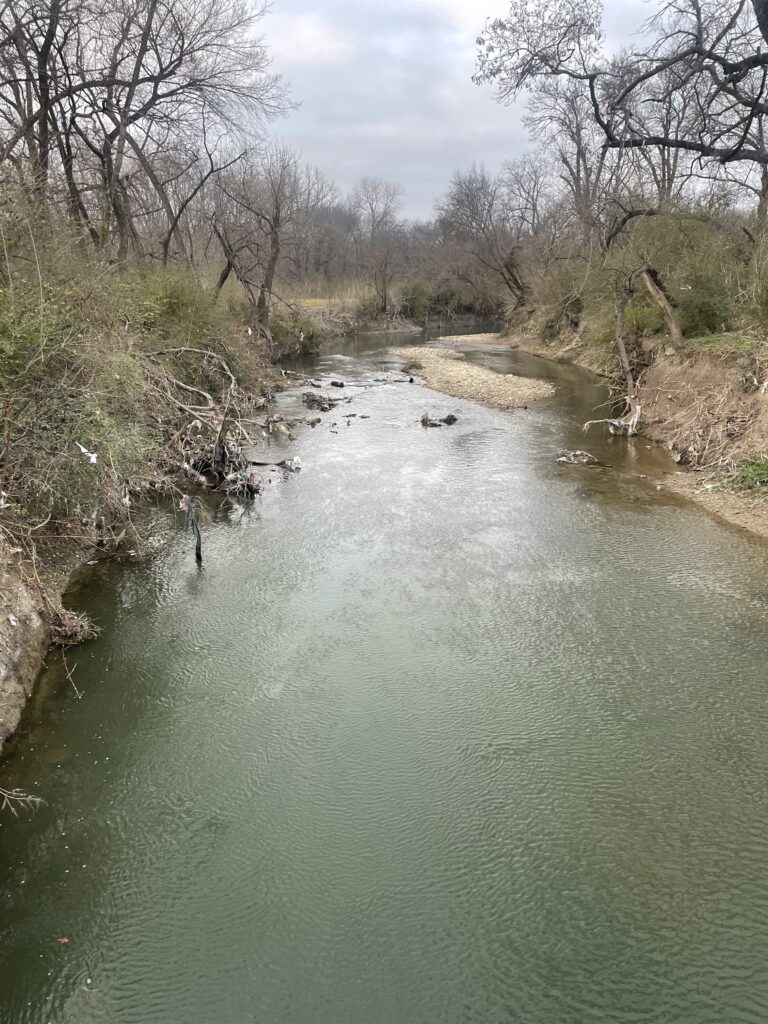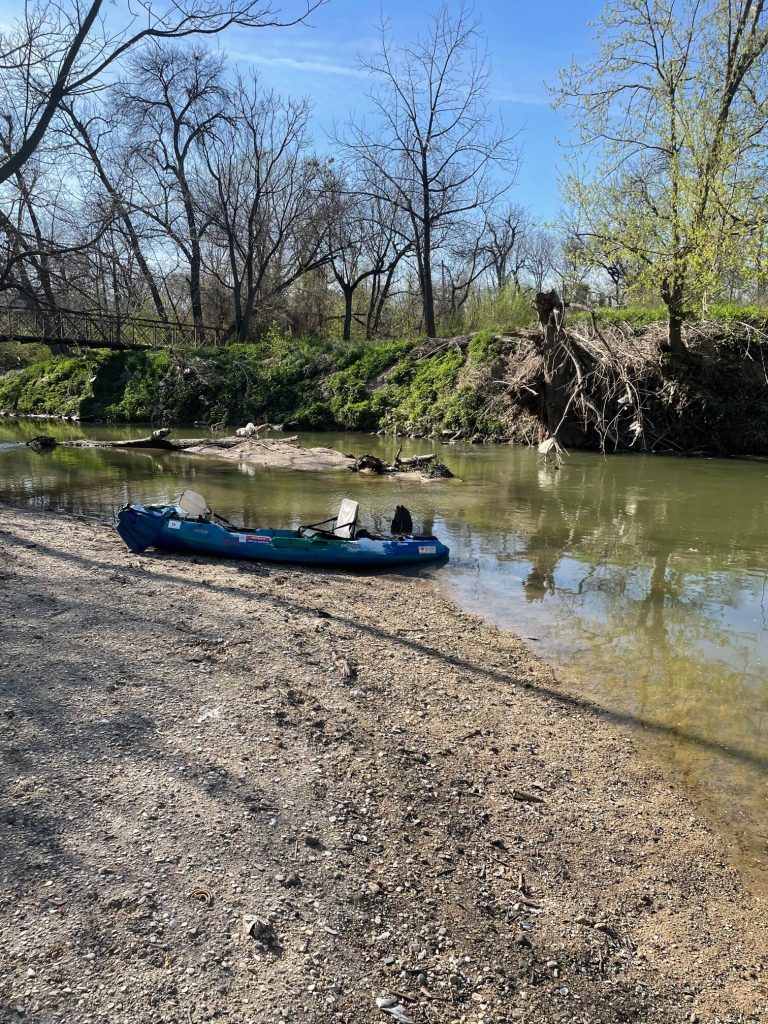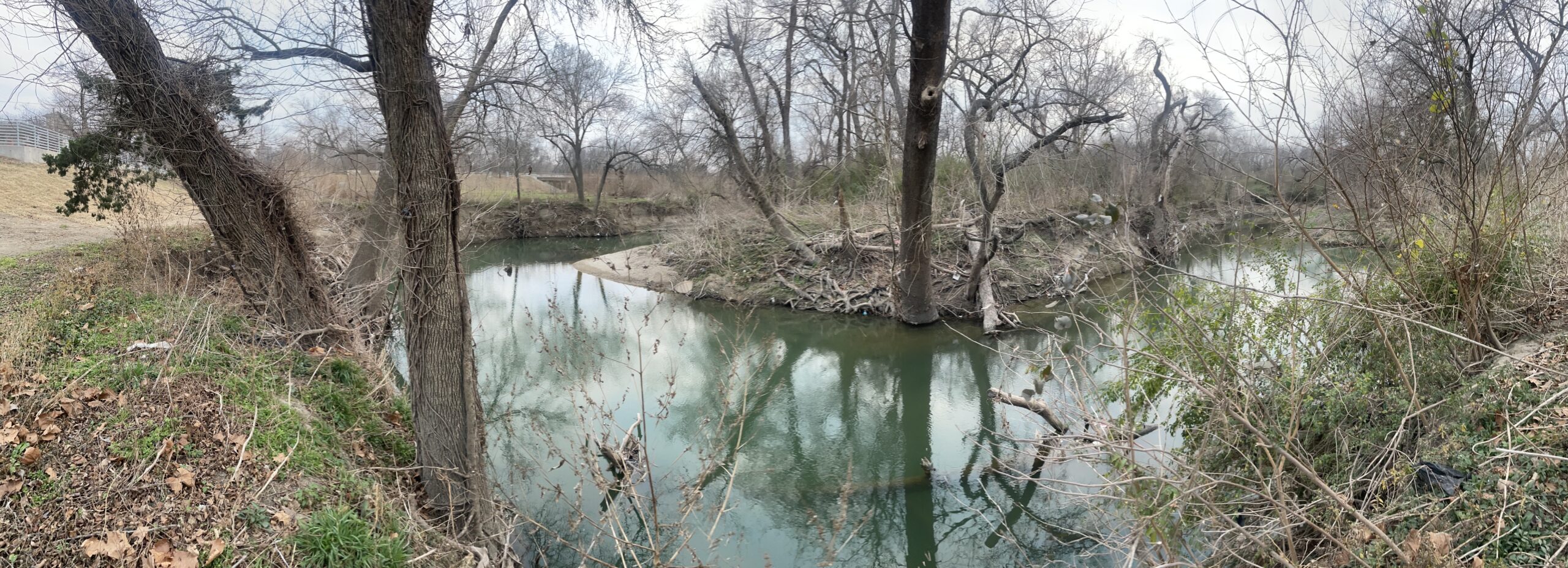Overview
Headwaters of Upper White Rock Creek rise in the area of Frisco in Collin County and flow a meandering path southward for almost 50 miles through the thick of Dallas to the Trinity River.
Recreation and Access
Quick Info
| Length | (upstream from Mockingbird one-way) 2 miles to Skillman, 3.5 miles to Fair Oaks, 4 miles to Walnut Hill, 4.8 miles to Greenville Ave, 8 miles to Hillcrest |
| Class (I-VI) | I-II |
| Minimum Flow | There is almost always enough flow to paddle up to Skillman bridge |
| Ideal Flow | 75-100 cfs |
| Maximum Flow | 1,000 cfs |
| Current River Conditions | USGS 80572 Greenville Ave. |
| Put-in map | Mockingbird Bridge at White Rock Lake |
| Take-outs & turn-arounds | Skillman, Fair Oaks, Walnut Hill, Moss Park Soccer Fields, Hillcrest Rd. |
| Boats | Canoes, Kayaks, SUPs |
| Season | Year around |
| Highlight | A little solitude in the city. |
The main impediments to this otherwise free-flowing creek are occasional log jams and White Rock Lake Dam in East Dallas. There is also a lack of proper put-ins and take-outs. The most accessible launch sites are at the mouth of White Rock Lake at Mockingbird Lane bridge and 5 miles upstream at Moss Park / Greenville Ave. A motivated paddler can make it over and through normal obstructions. Going upstream at Skillman bridge usually requires dragging your boat a little ways at several places. There is a persistent tough logjam to cross over or under near Brooks Park at a normal level. Upper White Rock Creek at 75 cfs and higher offers a good time for boaters with adequate skills and safety training. It is not uncommon to see spikes of 30,000 cfs during brief periods of intense rainfall! Fallen trees and strainers in the channel are common after high water. If you choose to run it at a higher level, take all safety precautions.
Featured Runs
Launch Site Maps
- Upper White Rock Creek at White Rock Lake (2-8 miles one way or 4-16 miles round trip)
- Moss Park Soccer Fields (5 miles one way to Mockingbird Ln. bridge. Easy access from NW corner soccer field parking lot).
Natural Features
Dallas and Collin County are within the Blackland Prairie Vegetational Area. The creek generally runs clear in the upper reaches and becomes muddy after confluence with Cottonwood Creek in the vicinity of LBJ-635/US-75. The dominant trees in White Rock Creek riparian environment include Cottonwood, Elm, Willow, Pecan, Bur Oak, Sycamore and many others.
Historical / Cultural Significance
White Rock Lake was built in 1911 as a Dallas water supply reservoir. In 1959, the lake was closed to swimming and the lake was removed as a water supply source.
Conservation and Threats
Rapid growth and urbanization throughout Dallas and Collin County is pushing higher quantities of water and sediment into White Rock Creek through increased impervious cover and disturbed surfaces. Excessive amounts of dirt often wash into creeks from landscapes that have recently lost their native vegetation and natural cover. Point-source pollution may be entering White Rock Creek where sewage leaks, WWTP overflows and other accidents occur. There were FIVE sewage overflows in Plano from 2019-2024. A Watershed Protection Plan is sorely needed to create a healthier White Rock Creek. E. coli levels exceed TCEQ/EPA standards most of the time. Non-point source pollution is taking place where pet waste, fertilizers, pesticides, herbicides and plastic trash are washing off lawns and streets into the creeks that feed the creek. All too regular bacterial spikes from municipal WWTP and sewerage pipeline spill accidents increase E. coli levels and present dangerous conditions for primary contact recreators. In 2018, Trinity River Authority TRA proposed in draft, to add White Rock Creek above White Rock Lake to the Clean Waters Act 303(d) Impaired Waters & TMDL List. Bacterial infections are easy to contract. Use soap and clean water, especially with open sores on hands or feet.
Fishing
White Rock Creek and White Rock Lake have Largemouth bass, White Bass, Channel Catfish, Carp and a variety of Sunfishes.
Additional Resources
Verify: How Gross Is White Rock Lake?
Verify: Are Texas Lakes Clean Enough to Swim In?
Verify: Is the Trinity River Gross?
Sample E. coli chart for White Rock Creek. An activity and report of Texas Stream Team monitors.






